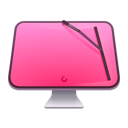
As a matter of fact, there are two ways to do it.

Mac terminal cleaner how to#
That is a good enough reason for you to know how to uninstall Homebrew on Mac.Ĭleaning your Mac of any unneeded apps like Homebrew on Mac is pretty easy. After all, it does take up some space on your Mac and might result in running out of application memory of your system.

You don’t have to use Homebrew anymore if you don’t want to. Just follow the similar method to clear the caches.It’s your choice. In order to flush all DNS caches on MacBook, you also need to clear both the Multicast DNS (MDNS) and Unicast DNS (UDNS).
Mac terminal cleaner password#
Step 3It will ask the password for the administrator account. Flush DNS Cache in macOS Snow Leopard or Lower Step 3Enter the password of the administrator account if asked. Remove DNS Cache in macOS Mavericks/Mountain Lion/Lion Step 3The administrator account password is also required. Flush DNS Cache in macOS Yosemite v10.10 through v10.10.3 Step 3Just make sure you have the administrator account password. Step 2Type the following command and press Enter: Step 1Navigate to “Applications” > “Utilities” > “Terminal”. Sudo killall -HUP mDNSResponder say DNS cache has been flushed Clear DNS Cache in macOS Yosemite or Above Here is the command line for your reference. Note: If you do not want to check the status manually, you can also ask the macOS to popup a message after clearing the DNS on MacBook. The command will process to flush your DNS cache on macOS Big Sur and Mojave. Step 3Type in the administrator password and press enter. Step 2Just type the following command, you can also copy and paste the command in the Terminal from a note. You can follow the same process to launch the Terminal for other macOS. It is the method to open up your Terminal command line interface application. Step 1Go to “Applications” > “Utilities” > “Terminal”. Flush DNS Cache in macOS Big Sur and Mojave You have to pay attention to the macOS you are running. It might not as difficult as your imagination. How to flush DNS on Mac? Just close the web browser before performing a flush. Part 2: How to Clear DNS in macOS via Terminal Make sure you want to clean the DNS caches in the selected system junk, and click the “Confirm” button. There is a confirmation window to confirm the process of flush DNS on Mac. Choose the DNS caches you want to clean, and then you can delete them by clicking the “Clean” button. If you cannot get the files, you can click the “Re-scan” to scan the Mac again. You can click the “View” button to check out the scan results to avoid any mistaken deletion. Step 3Scan the DNS cache on your MacĪfter that, you can click the “Scan” button, which takes a period of time to scan all the files. It includes the system cache, application cache, system logs, user logs, and more other localization files. Step 2Flush the DNS cache on your MacĬlick the “System Junk” to scan and locate the DNS caches. Choose the “Cleaner” option to have a quick start in the clearing process on your Mac. Once you have installed the Mac Cleaner, you can launch the program on your Mac computer.
Mac terminal cleaner for mac#

Part 1: The Easy Method to Flush DNS on Mac without Terminal


 0 kommentar(er)
0 kommentar(er)
